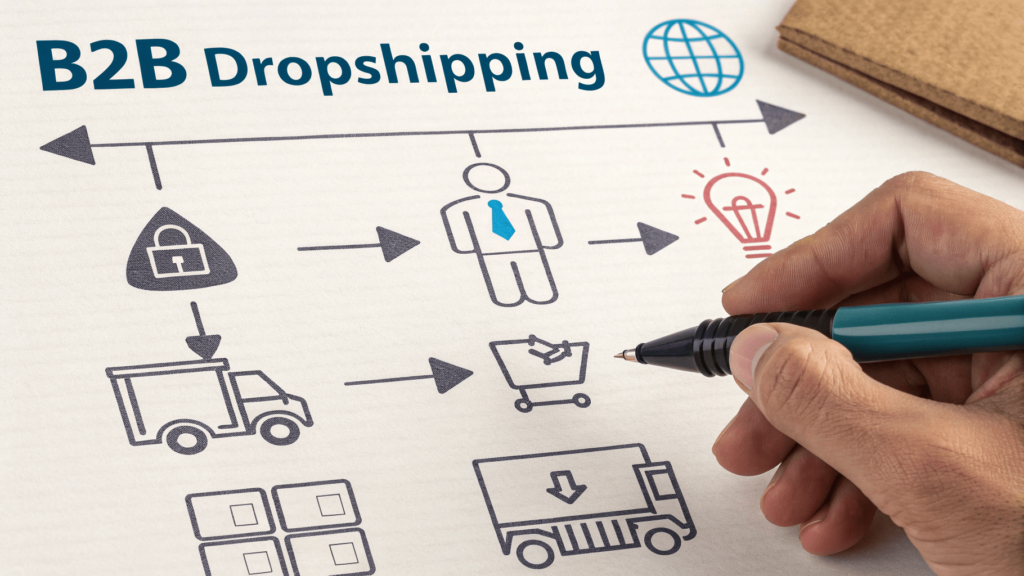
Introduction
In today’s fast-paced commerce landscape, B2B and B2C models are no longer isolated strategies. While B2C thrives on direct consumer relationships, B2B fuels the supply chain that makes retail possible. Enter B2B Dropshipping—a hybrid approach that bridges manufacturers, sellers, and consumers. By cutting out middlemen and streamlining operations, this model unlocks efficiency, cost savings, and scalability. Let’s explore how adopting B2B Dropshipping can transform your business.
Table of Contents
- Understanding B2B and B2C Commerce
- What is B2B Dropshipping?
- Advantages of B2B Dropshipping
- Challenges to Overcome
- Steps to Implement B2B Dropshipping
1、Understanding B2B and B2C Commerce
Traditional B2B Commerce
B2B transactions involve bulk purchases between businesses. Key traits include:
- High Minimum Order Quantities (MOQs): Suppliers often require large orders to justify production costs.
- Complex Processes: Lengthy negotiations, contracts, and quality checks slow down transactions.
- Quality Control: Buyers inspect goods before accepting shipments, ensuring standards are met.
B2C Commerce Dynamics
B2C focuses on selling directly to consumers:
- Diverse Customer Needs: Success hinges on identifying niche markets and fulfilling specific demands.
- Low-Ticket Items: Everyday products dominate, requiring high volume to drive profits.
- Quick Decisions: Shoppers prioritize convenience over lengthy comparisons.
2、What is B2B Dropshipping?
B2B Dropshipping merges wholesale efficiency with retail agility. Instead of stocking inventory, sellers list products from suppliers. When a customer orders, the supplier ships directly to them. This eliminates warehousing costs and lets businesses focus on marketing and customer relationships.
3、Advantages of B2B Dropshipping
1. Expanded Product Range
Without inventory limits, you can offer thousands of SKUs. For example, a kitchenware retailer could add specialty tools overnight by partnering with niche manufacturers.
2. Lower Operational Costs
Save on storage, staff, and rent. One study showed businesses reduce overhead by 30% using dropshipping models.
3. Faster Delivery Times
Work with suppliers near your customers. A U.S.-based seller using regional warehouses can deliver in 3 days vs. 2 weeks.
4. Customer-Centric Focus
Free from logistics, invest in understanding buyer behavior. Use analytics to spot trends like rising demand for eco-friendly packaging.
4、Challenges to Overcome
1. Quality Assurance Risks
Since all product production and quality inspections rely on B2B suppliers, control over quality is weaker. Especially when the number of product categories increases, the number of cooperating manufacturers grows exponentially, making it increasingly difficult to ensure quality control for individual product categories. Therefore, for B2B Dropshipping, it is crucial to select reliable manufacturers in advance to minimize concerns about product quality control
2. Challenges in product information managemen
B2B Dropshipping allows sellers to sell a wider variety of products simultaneously, which means managing more product information, especially inventory details, becomes crucial in business operations. When dealing with a large volume of product information, such as over 1,000 product categories, electronic solutions can be employed. For instance, using specialized product information management systems or product information synchronization APIs can help manage product data more effectively through advanced technological means.
3. Customer Service Gaps
Since products are shipped directly from manufacturers to customers, when customers claim that products do not match their needs, especially when customers provide detailed and professional descriptions, sellers who are not manufacturers and handle a wide range of products may not have in-depth knowledge of individual products. This can make it difficult for them to understand the customer’s genuine concerns and provide comprehensive after-sales service, leading to a higher likelihood of customer loss.
5、Steps to Implement B2B Dropshipping
- Identify Reliable Suppliers: Vet manufacturers through industry networks or trade shows.
- Integrate Systems: Use tools to automate order and inventory updates.
- Optimize Product Listings: Highlight unique selling points (e.g., “Ships within 48 hours”).
- Test and Refine: Run pilot programs with top-selling categories before scaling.
6、Conclusion
B2B Dropshipping isn’t just a trend—it’s a strategic shift. By blending wholesale reliability with retail flexibility, businesses can slash costs, accelerate growth, and stay ahead in competitive markets. Start small, choose partners wisely, and watch scalability become your new normal.


























